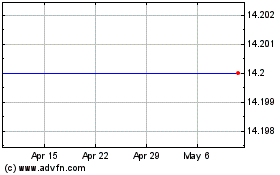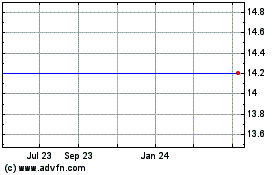Australia Confidence Sags as Mortgage Rates Rise
October 26 2015 - 7:40PM
Dow Jones News
SYDNEY—Higher mortgage rates for millions of homeowners are
shaking consumer confidence and raising the likelihood that
Australia's central bank will cut rates before the end of the year
to help stave off a recession.
The consumer squeeze stems from moves by commercial banks this
month to raise lending rates to recover the cost of a new
regulatory requirement to set aside more capital.
It comes as a sustained downturn in commodities prices is
hurting Australia's economy along with those of other resource-rich
countries such as Canada and Norway, where central banks are
considering extra stimulus measures to ward off the danger of a
sharp downturn.
They stand in contrast to the U.S. Federal Reserve, which is
considering raising rates as the U.S. economy shows signs of
recovery.
"Consumer confidence readings [in Australia] are now under close
scrutiny, and any deterioration there will be the main channel for
an interest-rate cut in coming months," said Michael Turner, a
strategist at RBC Capital Markets in Sydney. "If the central bank
starts feeling confidence has softened heading into Christmas, the
probability of a December rate cut will rise."
In mid-October, Westpac Banking Corp. said it would increase its
variable mortgage rate by 0.2 percentage point starting in
November. Days later, Australia's three other big banks announced
increases to their variable-rate mortgages, which are the type held
by most Australians.
Shortly after, signs began to emerge that Australians were
beginning to spend less freely. A survey last week by ANZ-Roy
Morgan showed a 2% weekly drop in consumer sentiment. The latest
survey, published on Tuesday, showed little improvement, with
consumers expressing particular concern over their personal
finances in the wake of the increases.
"The lift in mortgage rates over the past week is essentially a
quasi-tightening on the economy," said Savanth Sebastian, an
economist at CommSec brokerage. "A rate cut before Christmas would
help to boost activity across the nation."
Economists generally expect the central bank to refer to the big
lenders' moves in its monetary statement after it meets on Nov. 3.
It is set to meet again on Dec. 1.
The central bank has held its cash-rate target at 2% since May
as it strives to prevent the country from sliding into recession
for the first time since 1991. Some economists have predicted a
downturn as soon as this year amid plunging commodity prices linked
to China's sharp slowdown.
Despite the low official interest rates, business and consumer
confidence has remained fragile, and there are few signs nonmining
sectors of the economy are taking up the slack from wilting
investment in the resources industry.
Housing has been one of the few bright spots, with rising
lending to home buyers helping to fuel a construction boom in
cities such as Sydney and Melbourne.
The central bank has cited runaway house prices as a risk to the
fragile economy because of the danger of a sudden collapse—leading
it to support industry steps to curtail lending to property
speculators.
But the broad mortgage-rate increases introduced last week are
equally a concern, because of the harm they may do to consumer
confidence longer term.
"Housing has been a key pillar of growth this year, and without
that support we expect the economy will need further stimulus in
the form of another" half a percentage point interest rate cut,
said ANZ's co-head of Australian economics, Felicity Emmett,
shortly after the mortgage-rate increases were announced.
The banks justified the increases by pointing to the rising cost
of the new regulation, which aims to make the biggest lenders
"unquestionably strong" and ensure they comply with the Basel III
framework. It was designed to prevent a financial crisis of the
sort triggered by the collapse of Lehman Brothers and the
subsequent global credit crunch.
Robb M. Stewart in Melbourne contributed to this article.
Subscribe to WSJ: http://online.wsj.com?mod=djnwires
(END) Dow Jones Newswires
October 26, 2015 19:25 ET (23:25 GMT)
Copyright (c) 2015 Dow Jones & Company, Inc.
Westpac Banking (NYSE:WBK)
Historical Stock Chart
From Mar 2024 to Apr 2024

Westpac Banking (NYSE:WBK)
Historical Stock Chart
From Apr 2023 to Apr 2024
